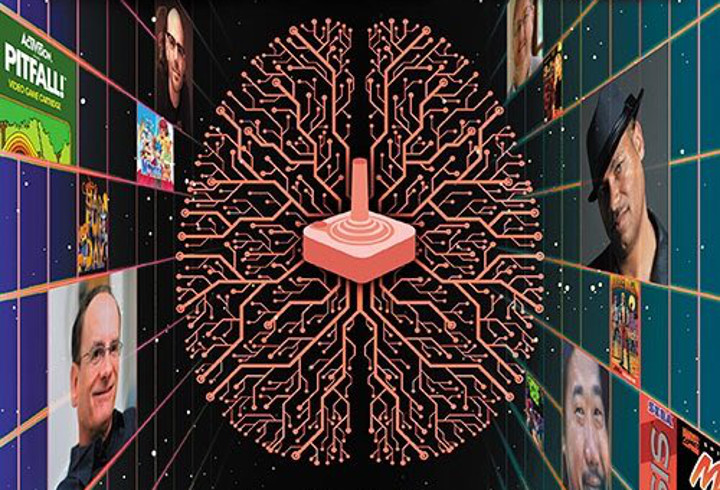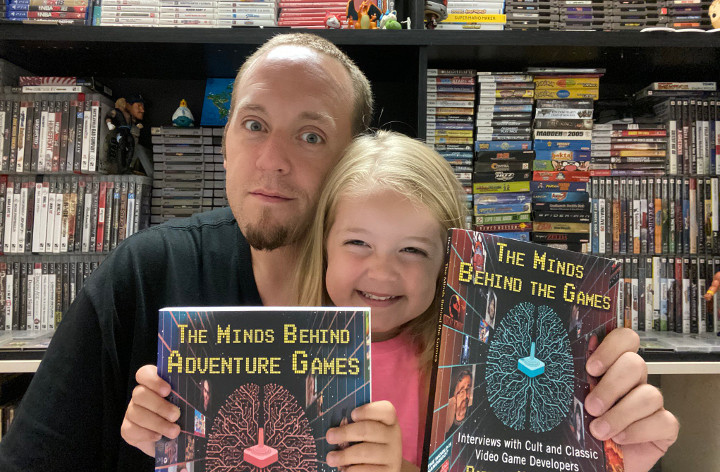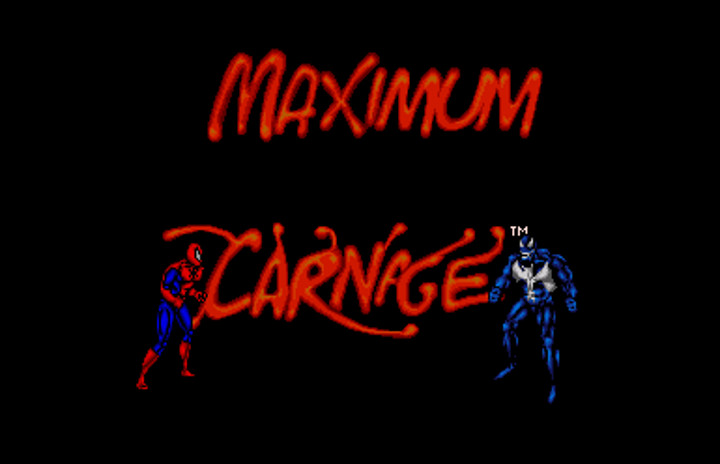Retrovolve Reviews Books: The Minds Behind Adventure Games by Patrick Hickey, Jr.

Back in 2018, Patrick Hickey, Jr., released a book called The Minds Behind The Games: Interviews with Cult and Classic Video Game Developers. I had the pleasure of reviewing it back then, and I later spoke with Hickey about the book (as well as his fascinating career trajectory).
Hickey’s career continues to move forward at a remarkable pace, it would seem, as at the tail end of 2019 he released a follow-up to his previous book. This one is called The Minds Behind Adventure Games: Interviews with Cult and Classic Video Game Developers. In case it’s not immediately clear from the title, this book deals specifically with the adventure game genre, though Hickey admits that he defined the term a bit loosely. He told me via DM:
There [are] a few games like Boom Blox and PaRappa [the Rapper] that aren’t adventure, but they either have extensive story modes or are fueled by the story even if the gameplay isn’t adventure styled. Essentially, [any] game that has a strong narrative and takes you on a journey… can be considered an adventure game of sorts.
This sentiment is expressed with a bit more punch in the book’s introduction:
… this book is a celebration of every game within this incredibly broad genre, from platformers, action and beat-’em-ups, to even genre mashups, rhythm games and puzzle titles that provide a sense of “adventure” thanks to their rich stories and the sense of wonder they create. While there may be a debate on whether or not some of the games featured within these pages are indeed part of the adventure genre, there’s no denying that all of games in this book provide plenty of it.
Those two statements pretty much set up my expectations for what was to follow. Now, having read the whole book (the publisher gave me a free ebook copy for this review), I can say with confidence that this book delivers on its promise of history, video games, and, perhaps most of all, adventure.
All of this talk of adventure aside, The Minds Behind Adventure Games follows the same basic premise as the first book. Hickey interviews game developers and uncovers the fascinating (and sometimes untold) stories behind the video games we love.
There’s a temptation to call this book “more of the same,” but that sounds like such a diss. If you’re interested in the history of video games at all, you can’t help but come out of the first book wanting more. “More of the same” would be a blessing — it would satisfy some of appetite that the first book created.

But even so, The Minds Behind Adventure Games offers more than its predecessor in some key ways. Hickey’s writing displays a sense of confidence that wasn’t always present in the first book, and there’s a clear willingness to delve just a little bit deeper into every topic than the first book did. It’s as if he followed his gut into the first book while crossing his fingers and hoping for the best, but he tackled the second book with affirmation that his gut had been right this whole time.
After the introductory content (of which there’s quite a bit), the book really starts moving with a chapter on Spider-Man and Venom: Maximum Carnage for the SNES and Genesis. It’s a great chapter about an astonishingly cool video game, and by the end of it, you should already be confident that picking up this book was a good decision.

As you’re subsequently whisked across the 200-plus pages that follow, you’ll get to see Garry Kitchen talk about his obsession with creating working machines inside of video games, you’ll witness Warren Specter ruminate about the legacy of the Epic Mickey games, you’ll learn how bizarre and unconventional the release of Black Label’s The Fellowship of the Ring game actually was. In back-to-back chapters, you’ll get to read about both the Atari 2600 Pitfall game and the SNES/Genesis Pitfall game that was inspired by it. I’m also happy to report that Die Hard Trilogy gets a chapter here, because this is a collection of games that gets mentioned far less often than it deserves.
In the chapter on the indie game Linelight, Brett Taylor, the game’s creator, says, “Don’t look for lightning; follow your curiosity.” And Hickey manifests that advice in every chapter in the book. Curiosity is clearly the driver here, and the impulses of that curiosity take us places we probably wouldn’t expect to go. In that sense, reading The Minds Behind Adventure Games feels like its own little adventure. I’ve played many of the games in this book for myself, but there are also quite a few that I haven’t; after reading this book, I’m already finding myself trying to dig some of them up.
Of course, just like with the previous book, I have some quibbles about The Minds Behind Adventure Games. While Hickey’s prose feels like it has more momentum than before, it still feels like it could probably use an additional round of editing. I could point out examples of this, but they wouldn’t be interesting to anyone who doesn’t have an English degree, or who hasn’t spent several years working as an editor (both of those are credits I can claim for myself). These are nitpicks about using the second-best word instead of the best word, or packing too many modifiers into a comma-less sentence. Suffice it to say that cleaner prose would make this a snappier read.
A more thorough round of fact-checking could have improved the book as well. One issue that sort of stuck in my craw is that Simon Pick mentions the taxi driving portion of Die Hard Trilogy drew inspiration from Crazy Taxi. However, that’s impossible because Die Hard Trilogy (released in 1996) predates Crazy Taxi (which first landed in arcades in 1999) by several years. It’s likely that Pick’s memory failed him on this occasion (he’s only human, after all), or even that he misspoke, but Hickey never addresses this in the book. A brief follow-up question could have cleared this up.
Hickey also shows more willingness to use superlatives than I am when talking about the history of video games — words like “first” and “best” can erode credibility when even a single counterexample can be provided. In my review of the previous book, I gave the example of Mutant League Football not being the only football game (or even the first) in which players can murder each other. When reading Minds Behind Adventure Games, I winced when Hickey referred to Maximum Carnage as “one of the first video games based solely on a comic book story arc.” Off the top of my head, I know that The Death and Return of Superman predates it (though not by very much), and I’m confident that, were I to really dig, I could probably produce examples dating back to the 1980s. At least he says “one of the first” instead of “the first,” but even so, it strikes me as a little bit reckless.

One final quibble — and this is the fault of the medium rather than of Hickey himself — is that I really do wish the pictures were in full-color, if not in the print version then at least in the ebook version. It’s heartbreaking to read Hickey gush about how gorgeous a video game looks, only to see the image of the game stripped of color. It’s a damn shame.
Of course, just like I said in my review of the previous book, all of these complaints are minor when contrasted against the achievements of the Minds Behind… series. Does the reader come away with a better understanding of the history of video game development? Absolutely. Is Hickey’s love for the medium apparent on every page? 100% yes. Is every single chapter interesting? I think so, though some are clearly more interesting than others. Does the book deliver on its promise of adventure? In my opinion, it does.
I love video games. The medium has a fascinating history that, unless people like Patrick Hickey, Jr., (and websites like Retrovolve, if I can be so bold) keep writing about it, there’s a risk that it could disappear forever. Hickey’s books are there to preserve it, and they can be extremely valuable resources for anyone who cares to learn about that history.
I care. I care very much in fact, and I’ve found both books in the Minds Behind… series to be treasures. Not only are they chock full of information you probably won’t find anywhere else, but they’re written with passion from the heart of a man who cares about this history as much as I do. These books inspire me to follow my own curiosity and see what other nuggets of history we can dig up before gaming’s great ancestors have dissolved into the Lifestream.
